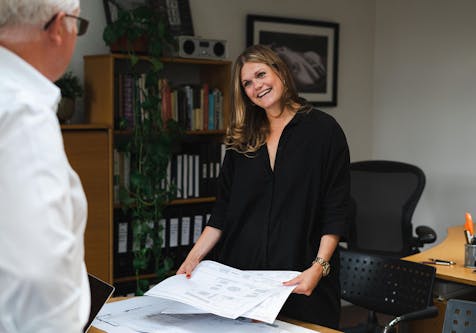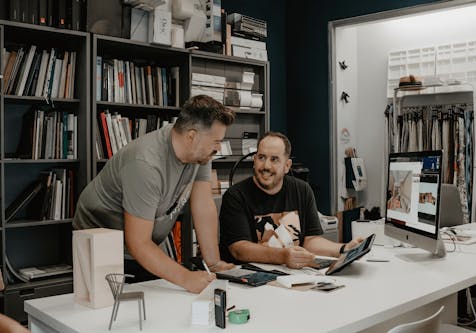Interior Design Collaboration Tips & Tools
Collaborating with clients, builders & your team doesn’t need to be expensive or hard. Find helpful interior design collaboration tips & tools
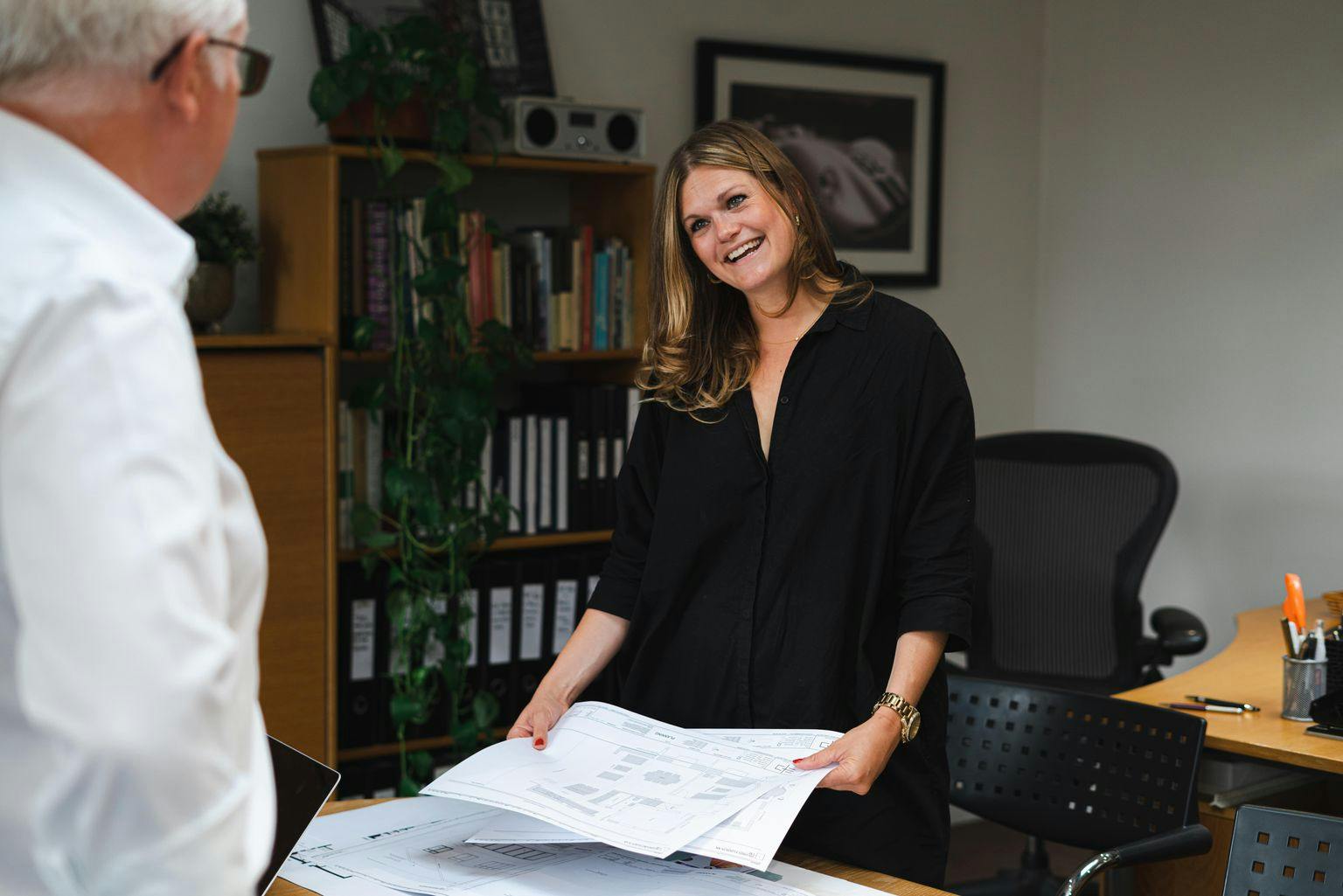
Despite bringing very different disciplines and skills to a project, all architects, interior designers and builders share the same end goal, to deliver a successful project for their client. So, having all these teams onboard from outset so they collaboratively work towards a shared goal, will ensure the client’s vision is achieved and even exceeded.
Here we offer up helpful tips for interior designers looking to collaborate successfully with their suppliers, clients and teams, while also demonstrating the real value these strong relationships can bring to a project and budget. Click on a link below to jump to the section you're most interested:
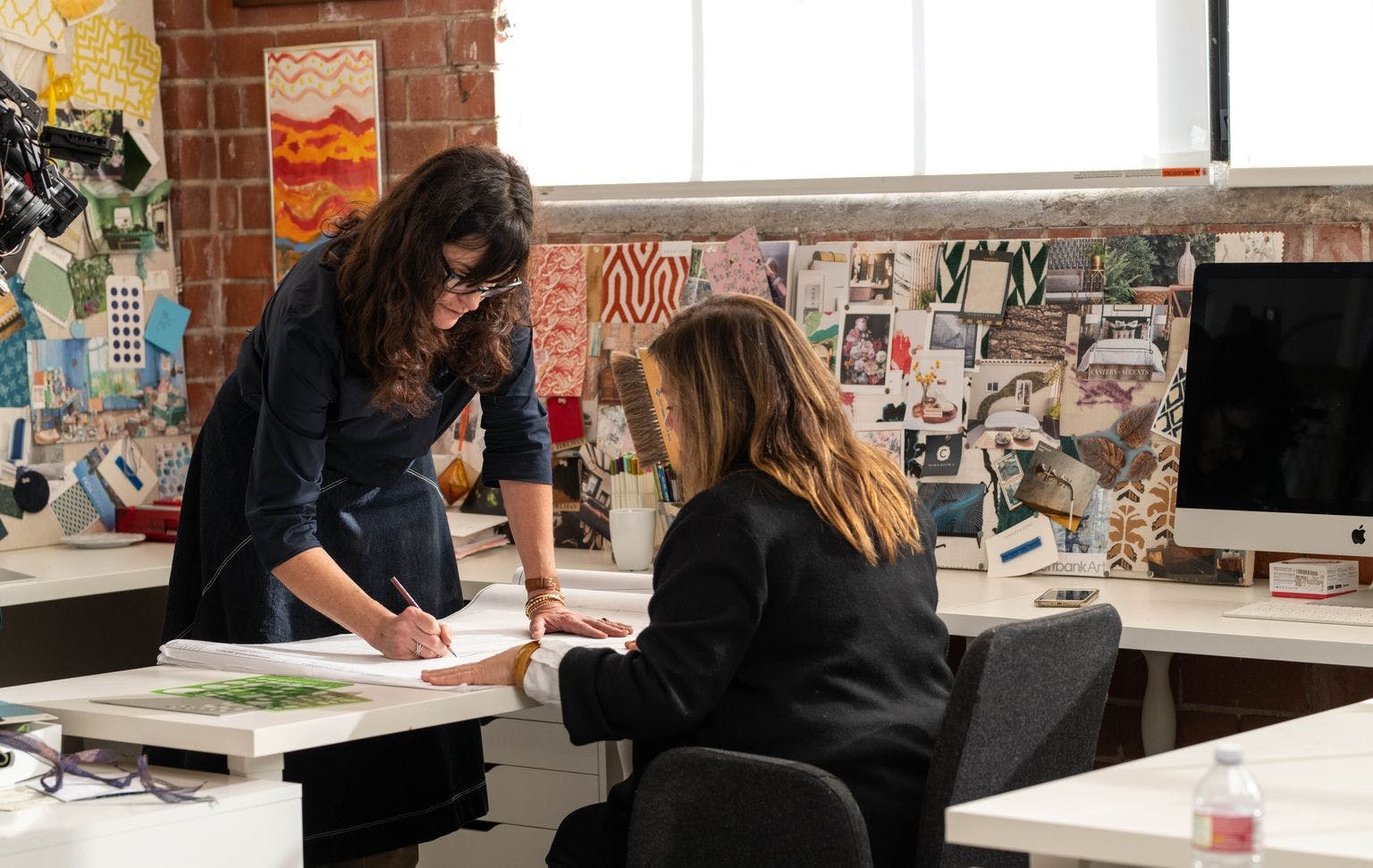
What is collaboration in interior design?
An interior designer’s role on a construction project is to create beautiful and functional interior spaces that suit the homeowner’s lifestyle and style preferences. However, this is only made possible if there has been a successful design and build phase beforehand. When an interior designer collaborates and works in harmony with the architect, build team and client, the result is a harmonious exchange of ideas and a cohesiveness of the project.
If an interior designer is not part of the design and build process, it can result in misdirection and a lack of understanding of the client’s goals. Stellar interior design collaboration can prevent these problems from occurring.
How to collaborate with interior design clients
Developing a strong relationship in which the client trusts and respects you as an interior designer, is paramount to the success of a project. After all, you are being hired to design their home, not your own, so when you collaborate and work closely with your client, the magic happens and the best result emerge.
The key to a good client collaboration is to gain a deep understanding of the client’s exact wants, needs, interior preferences and lifestyle. In return, the client must trust and respect you as a designer to interpret their vision and deliver the home they desire.
Why are good client relationships important?
Having a good client relationship with open channels of communication and regular updates will ensure everyone is on the same page. This is hugely important to avoid any costly mistakes being made that need to be corrected in the future.
You may also like…5 Tips for improving client relationships
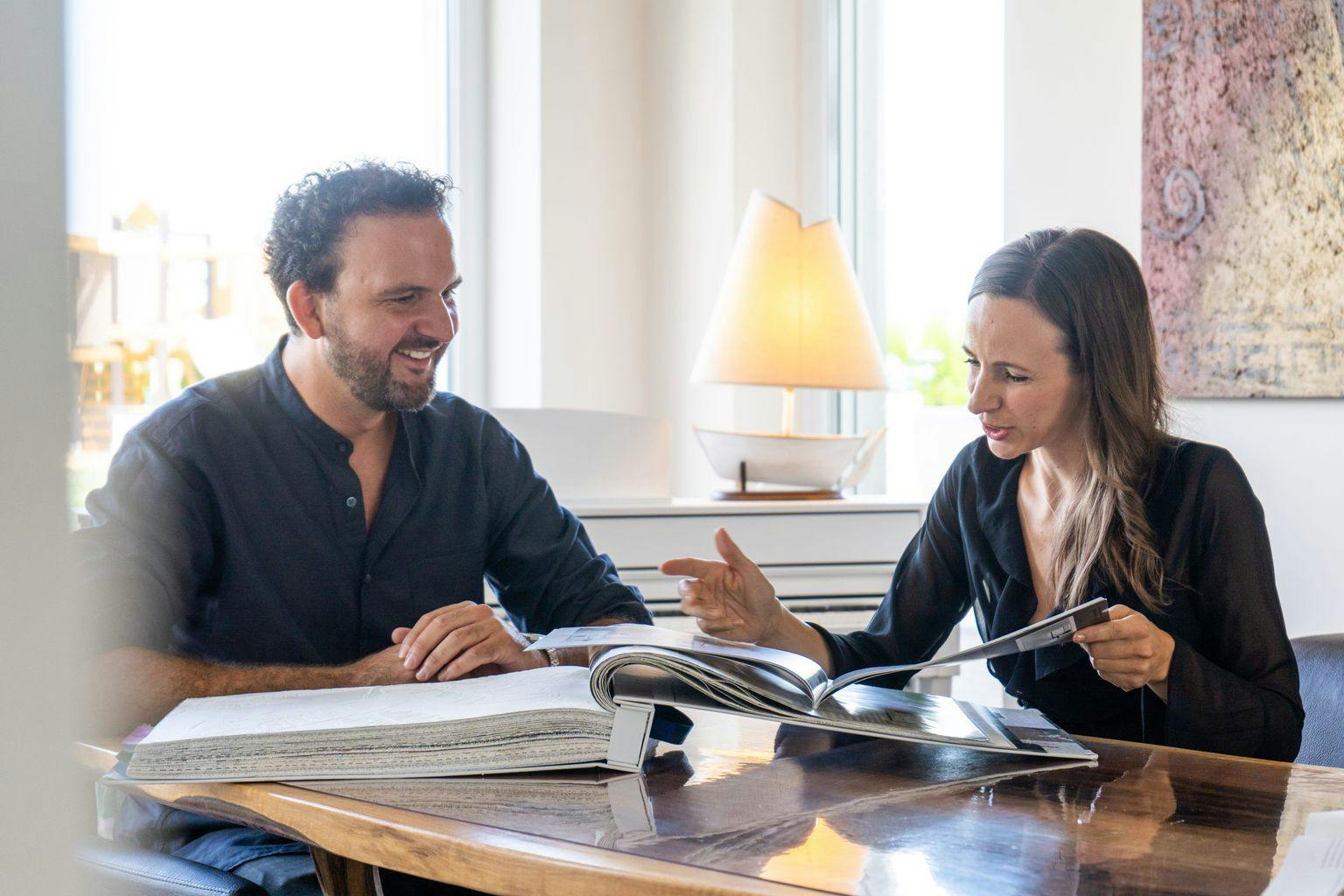
How to collaborate with suppliers
Interior designers rely on great products to deliver their work to a high standard and on time, whether that’s raw materials for joinery or fabulous furnishings to complete the room. So, it’s well worth building strong collaborations with trustworthy suppliers who you can rely on time and time again, particularly when you are busy. Here we suggest ways to maintain good relationships with sought-after suppliers, while you continue to meet your high standards.
1. Be a people person - First remember that you’re dealing with people, not faceless corporations. That means always being courteous and considerate. Show appreciation in what they do and their product by offering to see new samples and allowing them to present to your team. Then, when demand for your services is high and you need products fast, they are more likely to go out of their way to help. This always goes back to fostering relationships, communication, trust.
2. Give credit generously - Remember that every product source, no matter how small, is a business. Giving credit where credit is due, publicly and regularly, will go a long way toward building goodwill. Use the tag feature on social media when you post project photos. And regularly uploading gorgeous photos of finished projects to your Houzz Pro profile isn’t just a terrific way to attract new clients from among Houzz’s more than 65 million homeowners; it’s a great way to credit your sources.
3. Pay attention to professionalism - You’ll also want to exude professionalism in your communications, payment practices and work environment, so that suppliers want to work with you time and again. Houzz Pro can be invaluable for this, with tools that help with invoicing and payments and much more.
Why are good supplier relationships important?
When you have good supplier relationships, you’ll be able to rely on them to deliver every product to your standards, and in the time frame you’ve promised your clients. But most importantly of all, if you’ve built a good relationship with a supplier, they can refer potential clients to you. And referrals can be a lucrative source of ongoing work.
Read more about How to Cultivate Supplier Relationships When Business is Booming

How to collaborate with builders, contractors or architects
Fostering a good relationship with the builders, contractors and architect of your design project, helps to ensure everyone’s roles and responsibilities are defined and that everyone is working as a team towards a shared goal. Read on for tips on how to achieve great interior design collaboration with these different pros:
1. Invite everyone to be part of the design process - Every construction project starts with the design process, and having the entire team on board during the design phase will have a positive image on the project from the outset. This means the client, the architect, and the builder, as well as you, the interior designer, are all involved in identifying the goals of the project and the estimated budget. If there are flaws in the project at this stage, these can be identified by the builder before they become bigger problems in the future.
2. Schedule regular meetings - Regular meetings with the entire team, including the architect, builder and client, provide opportunities to discuss any issues, ensuring everyone’s on the same page, minimising costly delays.
3. Take an interest in the construction process - Assimilate yourself with the build process so you have a better understanding of any contractors concerns and know where they are coming from.
4. Maintain clear lines of communication - While regular meetings are good, there will be occasions when quick decisions need to be made. A phone call is the best way to make important and immediate decisions, while an email outlining the conservation should follow up the call to ensure everyone is clear. There will be times when different parties have different perspectives on how things are done, however, when everyone is practicing an effective collaborative approach, potential points of conflict will be reduced.
Why are good relationships with builders, contractors and architects important?
A successful collaboration of everyone involved in the design and construction process will result in a more seamless build, fewer changes, less wasted materials and the likelihood of delivering on time and within budget.
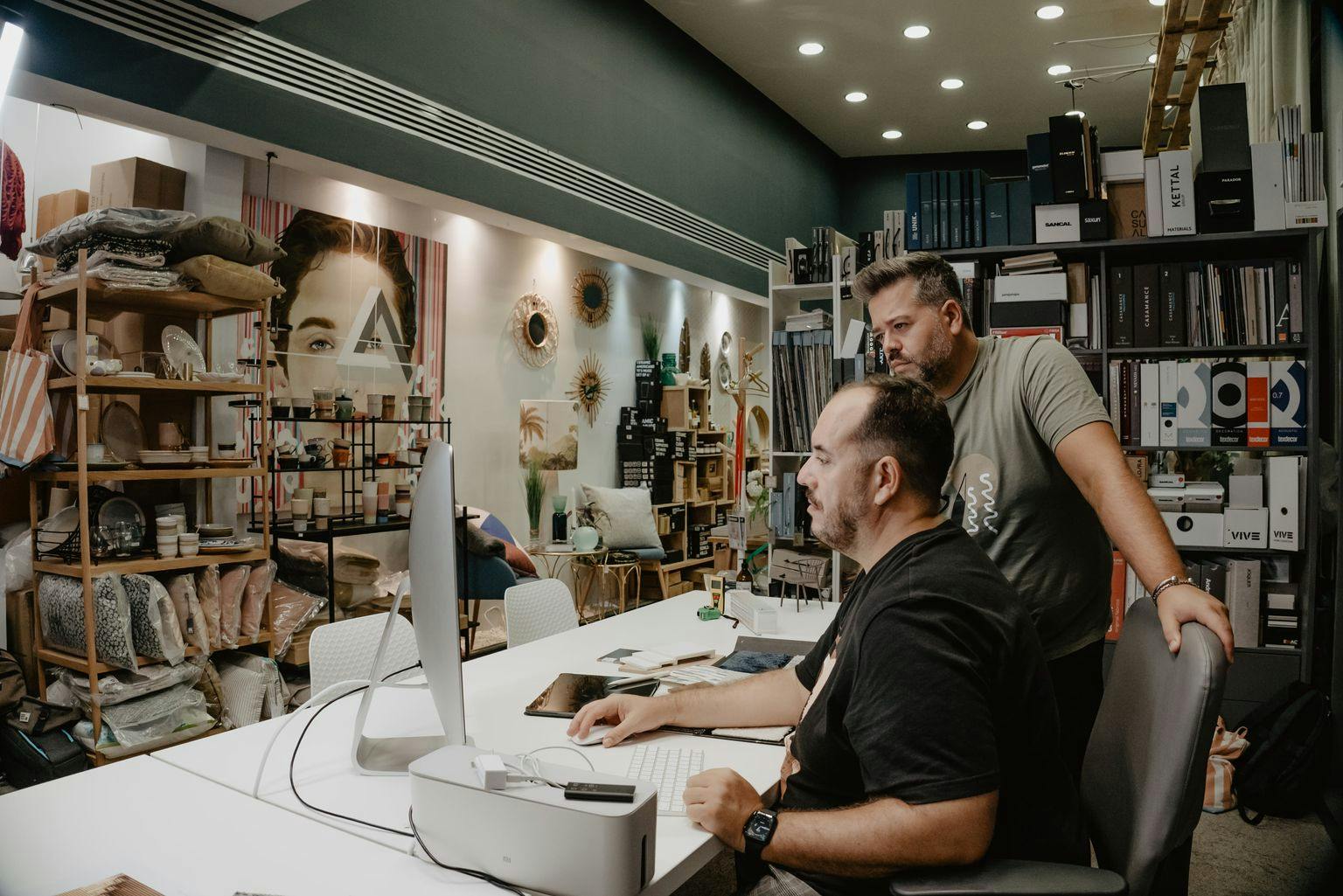
How to collaborate with your interior design team
It takes time and effort to build up a team of trustworthy employees who share your passion for your interior design firm, so it's crucial to nurture these strong relationships in order to continue producing high-quality work. Follow these tips and you’ll have a happy, successful team behind you, helping you grow your business:
- Get them involved with the evolution of a project - Allow team members to be involved at every stage of the process, from concept to pitching, so they engage with the project. Giving them a sense of ownership of a project, and not simply dictating your ideas to them, will build trust and care for your brand, and allow you to get on with your own work knowing the project is in capable hands.
- Delegate roles with clear completion dates - Set expectations and make every member of the team accountable for their work. By giving clear deadlines and what is expected by that date, you will achieve a seamless and successful workflow.
- Keep on top of timelines - Use project management tools, such as Houzz Pro, that you can share with your employees so everyone can view project schedules, access construction documents and share their own progress through daily logs.
- Learn from mistakes and move on - Everyone makes mistakes and it’s often from a lack of clear communication. So when an employee makes an error, discuss the issue, find a solution, and understand why it happened so you can prevent it from occurring again.
Why is collaborating with your team important?
Having the support of a strong and trustworthy team behind you will not only allow you to flourish and build your brand, it will also allow you to do the thing you love best - designing beautiful interiors for your clients.
Tools for better collaborations on interior design projects
In a super-connected world, look to these savvy tech solutions to help you achieve a state of ultimate interior design collaboration with clients, architects, builders and your team.
- Virtual Meetings - One to one meetings are always best, but when this isn’t possible, virtual meetings are a brilliant back up. Collaborate with everyone on the project from anywhere in the world with video conferencing tools, such as Zoom, Skype and GoToMeeting. If you’re someone that needs reminders, Zoom is great for syncing calendars so you never miss a meeting, while all three tools allow screen sharing. For quick and easy video calls with clients, FaceTime is great if you are on the go and want to wave samples in front of them or show them around a space.
- File Sharing - When the pressure is on, it’s easy for communications to slip through the cracks, so staying on top of everything with nifty tools that will help you be extra efficient. Using Dropbox, OneDrive or Google Drive, you can store all your files in the cloud, and allow collaborators to view and add to them via shareable links. Or if you’re looking for a really simple tool to collaborate with contractors, Houzz Pro allows you to give anyone access to relevant project details, files and timelines.
- Project Management - Online collaboration tools are a game-changer for improving workflow structure. With these tools you can manage projects all in one place and keep everyone in the loop. Podio, for example, is great for keeping an eye on the status of projects, assigning different tasks to team members, and using an app when you are away from the office. While, 2020 Manager has been specifically designed for interior designers enabling them to collaborate with team members and clients, and manage prospects, designs and even contracts from anywhere. A genius feature of Houzz Pro’s project collaboration tool is the daily log that allows employees and contractors to report progress through videos, notes and photos, which can then be published to the client’s dashboard to keep them informed.
- 3D Visualisation/Floor Planning - Kitchen and bathroom designers will love the ease of design software tools such as Design Live or Fusion Live tools, which create 3D models and floor plans and allow real-time collaboration with the client for constant feedback and approval. Houzz Pro’s 3D interior design software is dedicated to helping the client truly visualise the project by using dollhouse and aerial views, as well as an “in real life” augmented reality walk-through.
More build teams are realising the value and importance of collaborating with different disciplines on design projects. When everyone on a build project, including the interior designer, architect, builder and, most importantly, the client, are all collaborating and working in harmony, the end result is sure to be a stunning space or home that exceeds the client’s expectations, and to help you do that consider starting a free trial of Houzz Pro.
To continue learning, read our next guide on Project Management Tips for Interior Designers.




